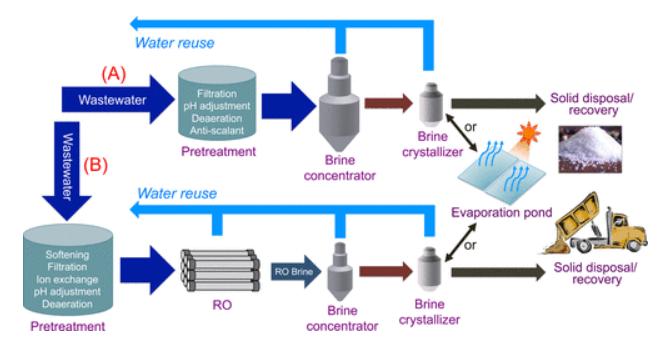The overuse of antibiotics and the release of antibiotic residues into the environment are among the primary drivers of the rising worldwide health concern called antimicrobial resistance (AMR). In order to address AMR, antibiotic contamination in water bodies must be controlled. In order to ensure that water bearing residues of antibiotics is treated and reused, Zero Liquid Discharge (ZLD) treatment provides an essential solution. Lets explore the critical role that ZLD can play in lowering antibiotic contamination in water and minimizing AMR.
Antibiotic Pollution’s Part in AMR
Residues from farms, hospitals, homes, and pharmaceutical manufacturing plants can contaminate waterways with antibiotics. Antibiotic-resistant bacteria evolve and spread across the ecosystem as a result of this contamination. The selection pressure that antibiotics apply to microbial communities when they are present in water bodies encourages the survival and spread of resistant species. As a result, the AMR epidemic worsens, making infections more difficult to treat and raising mortality and healthcare costs.
ZLD Technology and The Elements of It
ZLD, or zero liquid discharge, is a comprehensive wastewater treatment method that collects and reuses all liquid waste from an effluent system. Addressing and eliminating potential environmental contamination by producing clean water for reuse and minimizing wastewater discharge is the main objective of ZLD. The following are the principal parts of ZLD systems:
- The first step in treating wastewater involves removing large particles and adjusting its chemical composition to get it ready for further stages of treatment. This is known as pre-treatment.
- Evaporation: Using sophisticated evaporators, wastewater is concentrated, causing dissolved solids to precipitate.
- Crystallization: Solid crystals are formed as a result of further wastewater concentration.
- Condensation: After the evaporation process, water vapor condenses and is recycled for reuse.
ZLD in the Management of Antibiotic Contamination
Through a number of methods, ZLD technology can dramatically reduce the amount of antibiotic pollution in water bodies:
- Removal of Liquid Waste Emission: By eliminating any liquid discharge, ZLD ensures that no antibiotic-laden effluent is released into the environment. This keeps antibiotics out of natural water systems, where they could encourage the growth of bacteria that are resistant to them.
- Antibiotic Concentration and Removal: Antibiotics and other pollutants are concentrated in the brine during the ZLD process; the brine is subsequently treated to recover water and precipitate the contaminants as solid waste. This effectively removes antibiotics from the wastewater, reducing the risk of environmental contamination.
- Excellent Water Recovery: ZLD techniques recover high-quality water that can be utilized again in industrial operations or for other reasons, limiting its impact on the environment and lowering the need for fresh water.
- Compliance with Strict Regulations: ZLD systems assist industries in meeting strict discharge requirements, especially those that aim to lower the emissions of antibiotics. Adherence to regulations not only safeguards the environment but also establishes corporations as ethical and sustainable enterprises.
ZLD’s Advantages in AMR Control
Prevention of Environmental Contamination: By keeping antibiotics out of water bodies, ZLD systems help to lower the amount of antibiotic resistance in the environment. ZLD stops the release of wastewater contaminated with antibiotics, hence blocking a critical pathway for the spread of resistance.
Aquatic Ecosystem Protection: In aquatic habitats, antibiotic contamination can upset microbial communities, creating imbalances that encourage the growth of resistant bacteria. ZLD contributes to the preservation of these ecosystems’ natural balance and the wellbeing of aquatic life by treating and recycling wastewater.
Health Protection for Public: Preserving public health necessitates reducing environmental antibiotic contamination. ZLD protects human populations by preventing the emergence of illnesses that are difficult to treat by restricting the spread of resistant bacteria in the environment.
Economic Benefits: Businesses that adopt ZLD systems stand to gain from lower liability, regulatory compliance, and possible cost savings through resource recovery and water reuse. For businesses seeking to reduce their environmental effect, ZLD systems are a desirable alternative because of the financial advantages that can cover the costs of installation and operation.
One effective weapon in the fight against antibiotic pollution and antimicrobial resistance (AMR) is zero liquid discharge (ZLD) treatment. ZLD systems safeguard water bodies and reduce the selection pressure that promotes the growth of resistant bacteria by preventing the discharge of liquid waste and ensuring the removal of antibiotic residues from wastewater. ZLD is a standout example of a workable way to safeguard public health and water resources in an industry that is pushing for sustainability.
EXPLORE :
Antimicrobial resistance: Zero Liquid Discharge can help contain environmental AMR : https://tinyurl.com/5ecedtdn
Antibiotic microbial resistance (AMR) removal efficiencies by conventional and advanced wastewater treatment processes: A review : https://tinyurl.com/59d5w3se
The Global Rise of Zero Liquid Discharge for Wastewater Management: Drivers, Technologies, and Future Directions : https://tinyurl.com/2p8pa5a7
